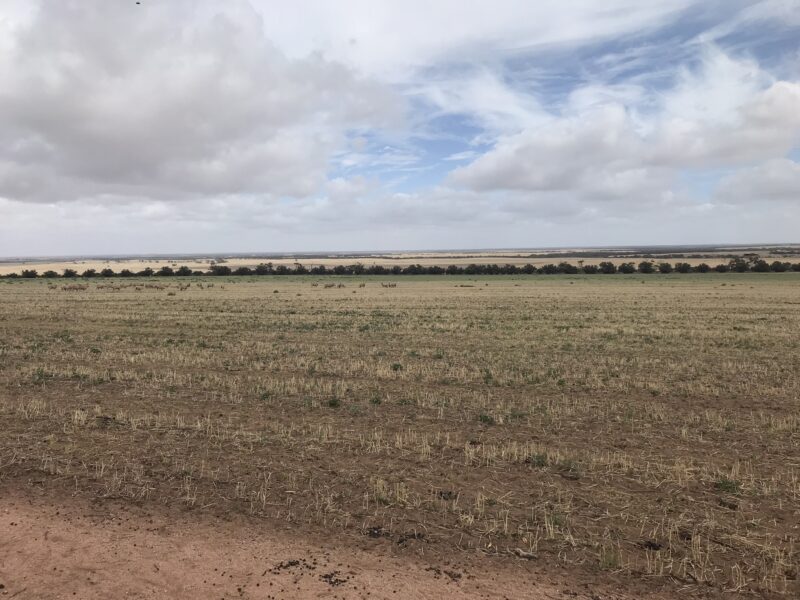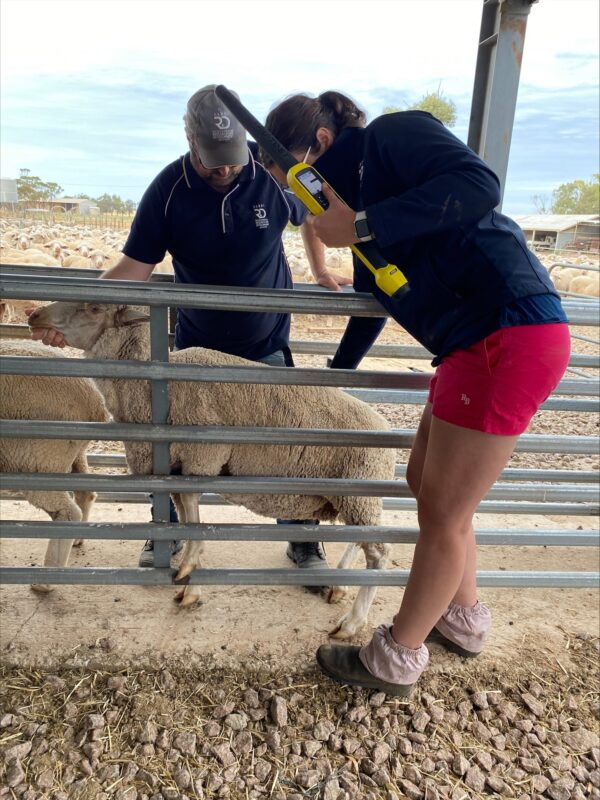SA Drought Hub Virtual Fencing project update
The trial took place at the Minnipa Agricultural Centre during January 2024. Fifty merino ewes were housed in a paddock containing barley stubble. This paddock contains a sandy rise known to produce less biomass than the remainder of the paddock. This rise is also a preferred camping area for sheep which further contributes to the fragility of the soil. The trial aimed to use virtual fencing to exclude the ewes from this sandy rise to assess if virtual fencing is suitable for this implementation in sheep. The virtual fence was in place for three weeks with one fence configuration implemented for the duration of the trial.
Virtual fencing excluded all fifty sheep from the sandy rise for the entire three weeks. When observing GPS images of sheep movements during the trial it is evident that the sheep were attracted to the sandy rise. However, there is a clear line where virtual fencing signals were applied to the sheep and they responded favourably by avoiding the exclusion zone. This finding is important for understanding how virtual fencing may be implemented in sheep upon commercialisation.
This trial was funded by SARDI and the South Australia Drought Hub. Virtual fencing is prohibited for commercial use in South Australia. Animal ethics approval was granted to undertake this research.
This update is part of the Project "Virtual Fencing for improved climate resilience on South Australian farms DN1_23_12".







